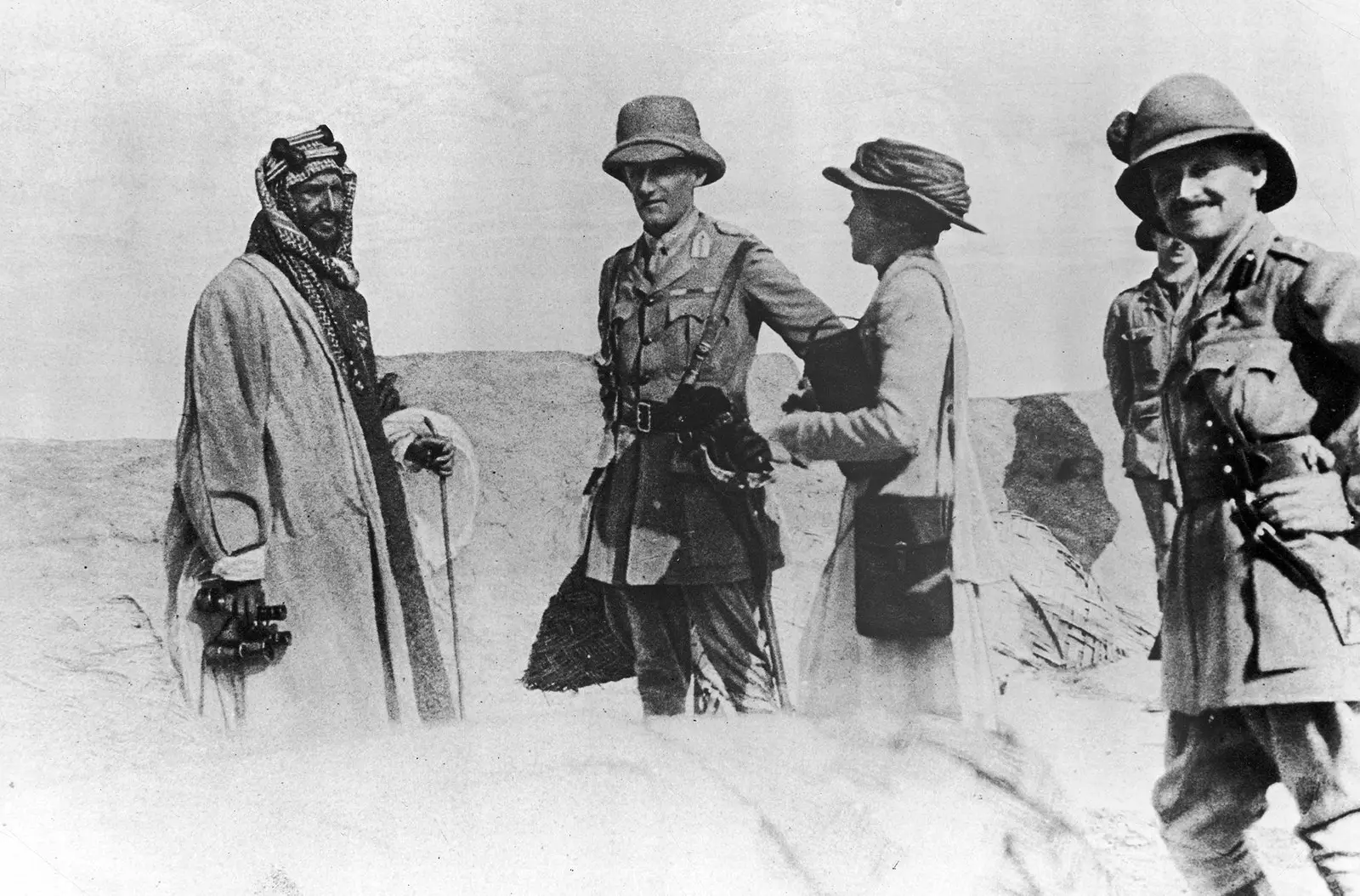
Gertrude Bell: she traveled "only" with her silverware and linen tablecloths
Being a woman in 1900 and traveling, writing, excavating lost cities, traveling farther, establish relations with desert sheiks, traverse the Middle East as a secret agent, participate in international conferences, draw the borders of a country, found a museum.
Gertrude Bell went further than any other woman born in Victorian England. Her family had a great fortune. That helped.
But she could have stayed in the comfortable place that the system had given her. Get married and enjoy the class privileges of it. She did not do it. Her life represented a constant breaking of the norms imposed on her gender academically, socially and politically.
Her father, Hugh Bell, was one of the steel barons of northern England. Unlike the aristocracy, in the great families of the industry it was usual for women to manage their own assets.
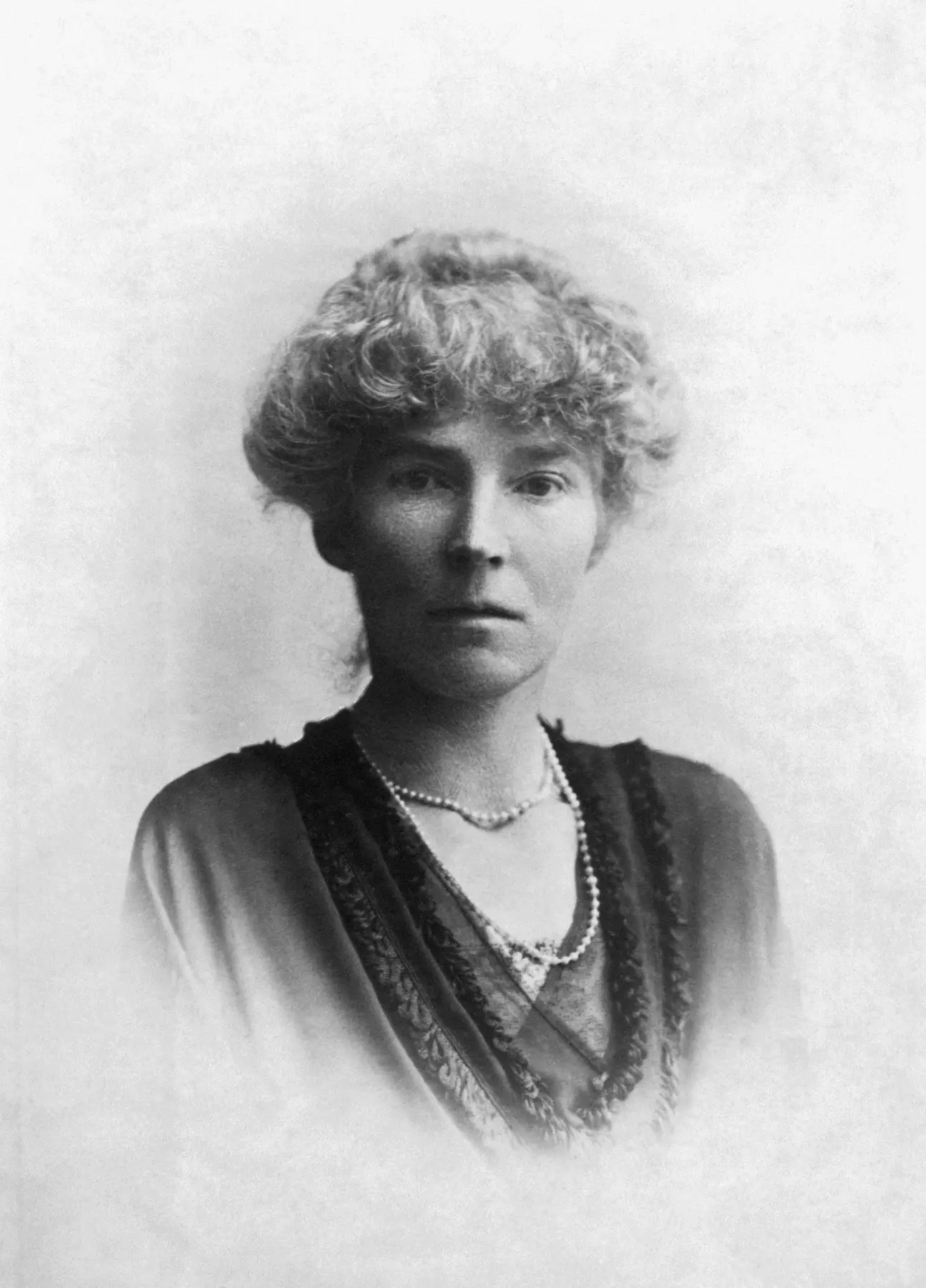
Gertrude Bell, archaeologist, Arabist, writer, and spy in World War I
Gertrude was brought up to play an active role in a society of men. She expanded that margin of freedom and took her father, a member of the Liberal Party, as a model of political action.
She studied Modern History at Oxford and she graduated without an academic title, since this was not granted to women until 1920. Even then she was fluent in eight languages, including Arabic. Upon completion of her studies, in 1892, she traveled to Tehran, where her uncle, Frank Lascelles, was ambassador.
She traveled through Persia on horseback, took more than 500 photographs, learned the language and fell in love with the secretary of the embassy. Her father ruled out the possibility of a marriage due to the candidate's lack of fortune. Gertrude was 24 years old. On her return he published Imagénes persas.
Over the next ten years Gertrude Bell shaped three of her characters: the traveler, the mountaineer and the archaeologist.
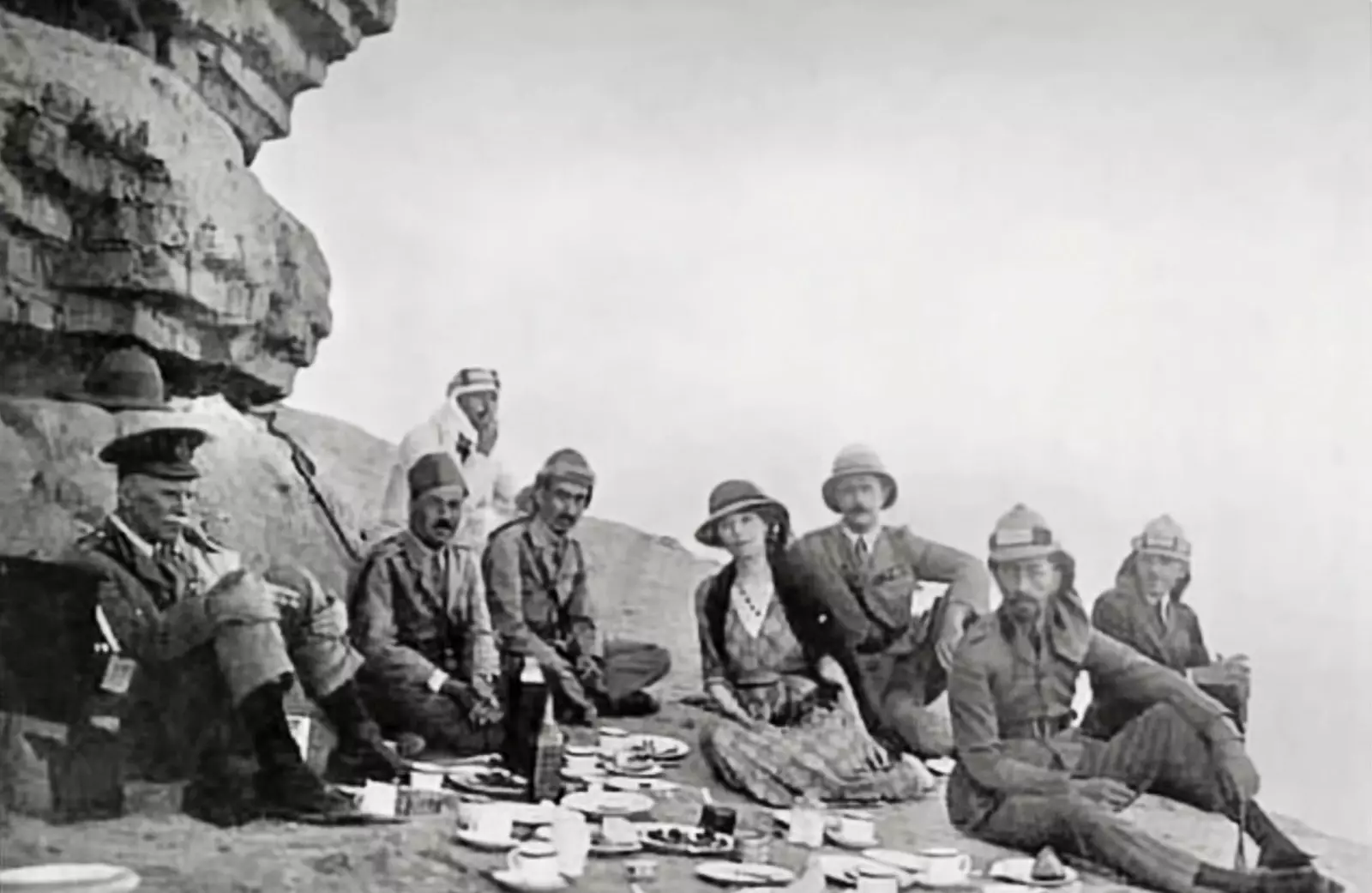
Gertrude Bell on her trip to Saudi Arabia
MOUNTAIN CLIMBER
The mountaineer was born in the Alps. Between 1899 and 1904, Bell climbed Mont Blanc and the Matterhorn. In 1902 she hung for two days on a wall of the Finsteraarhorn because of a blizzard.
In the Bearnese Alps, a peak was named after her: Gertrudpitze, after she was the first to climb it. She viewed mountaineering as a diversion, a fitting counterpoint to her forays into the Middle East, the reverse of the vast desert she traversed time after time.
THE TRAVELER AND THE ARCHEOLOGIST
Bell had grown up in a family environment inclined to travel. Along with her father and her brother, she visited India, Burma, Singapore and Japan.
On a family trip to Greece she met D. G. Hogarth, then director of the British School in Athens, who carried out excavations on the island of Melos. Her friendship with the archaeologist would prove crucial years later.
But those trips were nothing more than extensions of the wide network of contacts provided by the social and political position of her family. Bell wanted to go further. The East offered him freedom.
In 1900, in order to improve her command of Arabic, she moved to Jerusalem. She visited Palmyra, Aleppo and Petra. She documented, photographed.
Among the images of her appears the gate of Mushatta, that the Ottoman sultan would give to the kaiser in 1913, and that today is in the Pergamon Museum in Berlin.
Bell was traveling on horseback with Fattuh, an Armenian servant. A large entourage carried her tent, equipped with a bed, table, chairs, a workbookcase, and a bathtub.
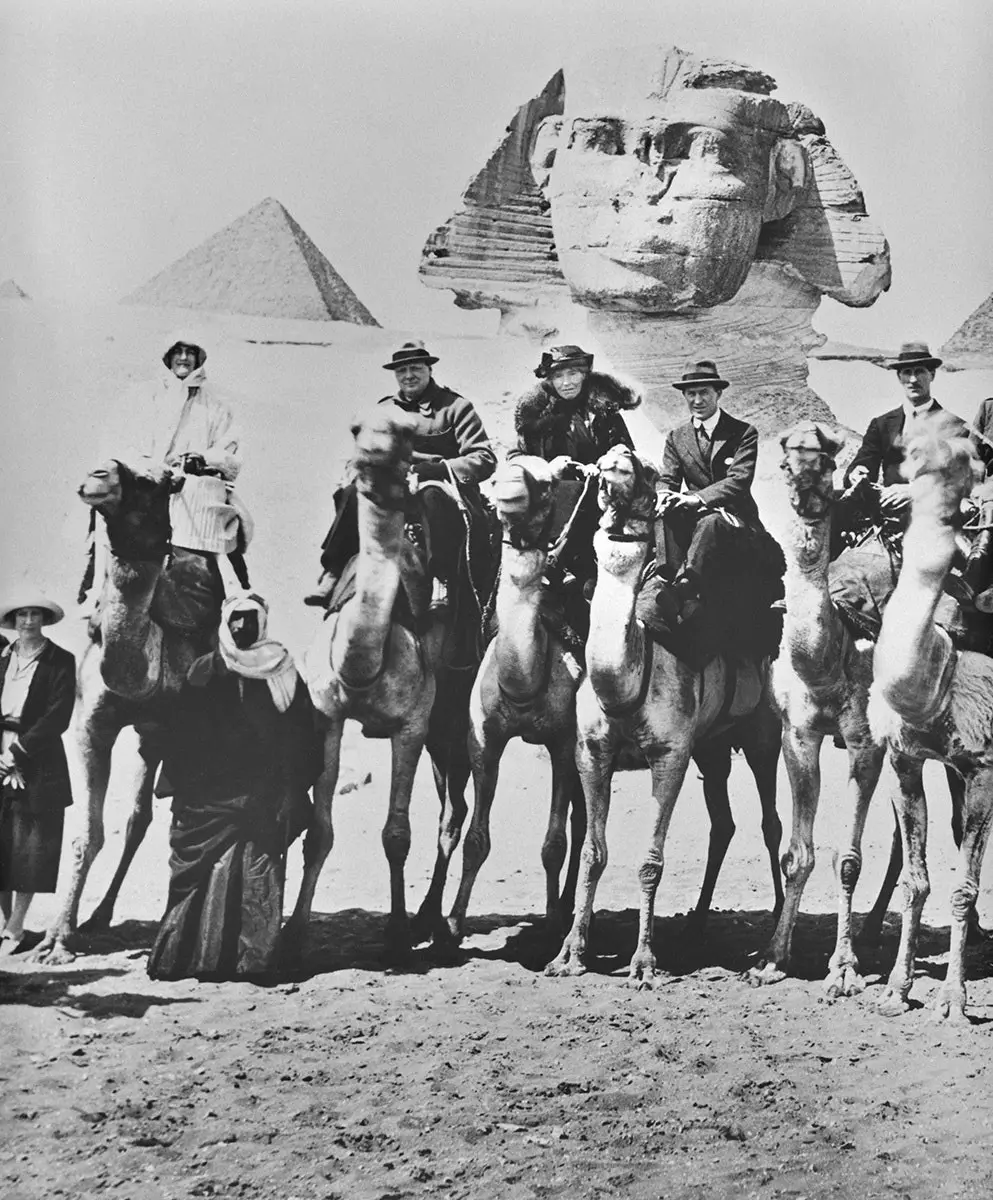
Mr & Mrs Winston Churchill, T.E.Lawrence and Gertrude Bell in Egypt
On her first voyage to the Euphrates River she participated in the excavations of the Hittite city of Karchemish with Hogarth. There she met T.E. LawrenceLawrence of Arabia that, like her, he had studied Modern History at Oxford and that, like her, she had found in the East a life apart from stifling British society.
During the next twelve years she Gertrude she would travel six times through Arabia. She established close relationships with the nomadic tribes that she encountered along her way.
She was treated equally by the shaykhs and enjoyed access to female society, that gave him his own perspective on the complex network that linked or opposed the clans.
In 1913 she traveled 3,000 kilometers from Damascus to the city of Hail, she in the Arabian Peninsula, stopping on archaeological missions.
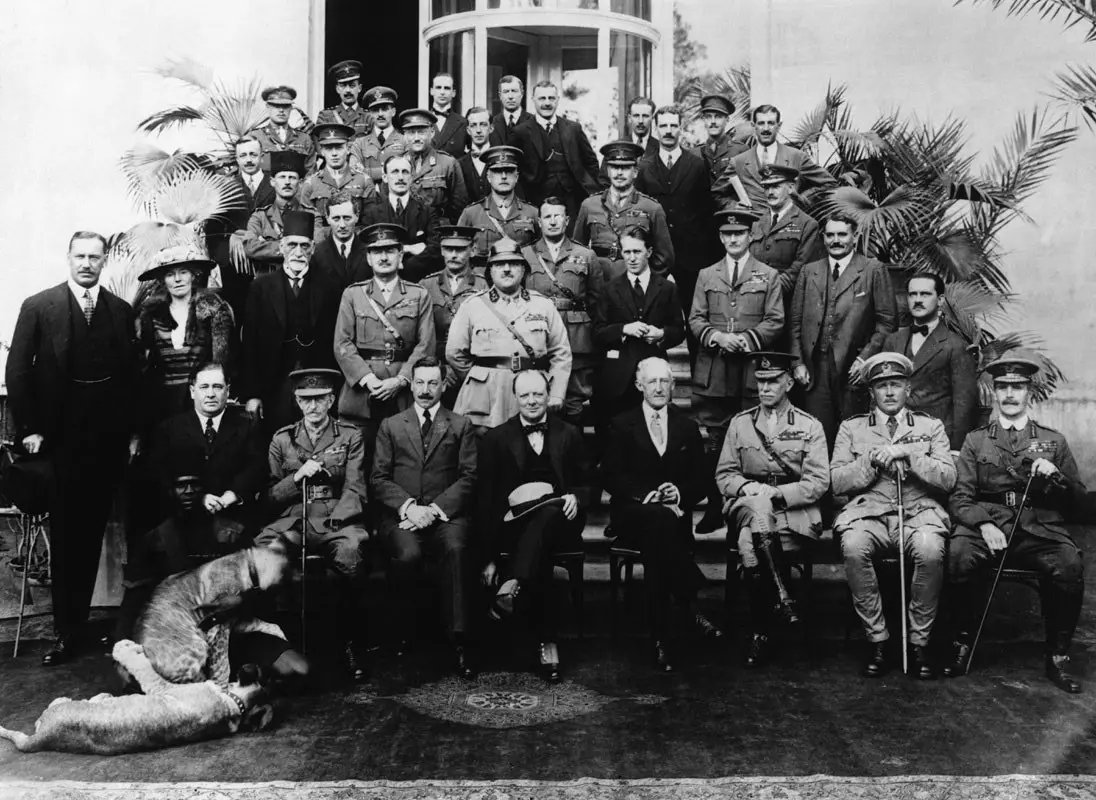
Gertrude Bell, the only woman in the 1921 Cairo photograph, which also features a young Winston Churchill
THE SPY
The First World War brought archeology closer to espionage. The excavations justified the presence of archaeologists in strategic areas and their proximity to the local population facilitated their mobility.
So it is not surprising that the head of the British Arab Bureau in Cairo, in charge of the Middle East, was an archaeologist: Hogarth, who summoned the two greatest experts in the region: Gertrude Bell and T.E. Lawrence.
The travelers were commissioned to make a map of the tribes. The Ottoman Empire, an ally of Germany, was in the enemy camp, so it was essential to draw the sheikhs of the desert to the British side. Bell made an exhaustive report that, in order not to be affected by her authority, was attributed to several (male) authors.
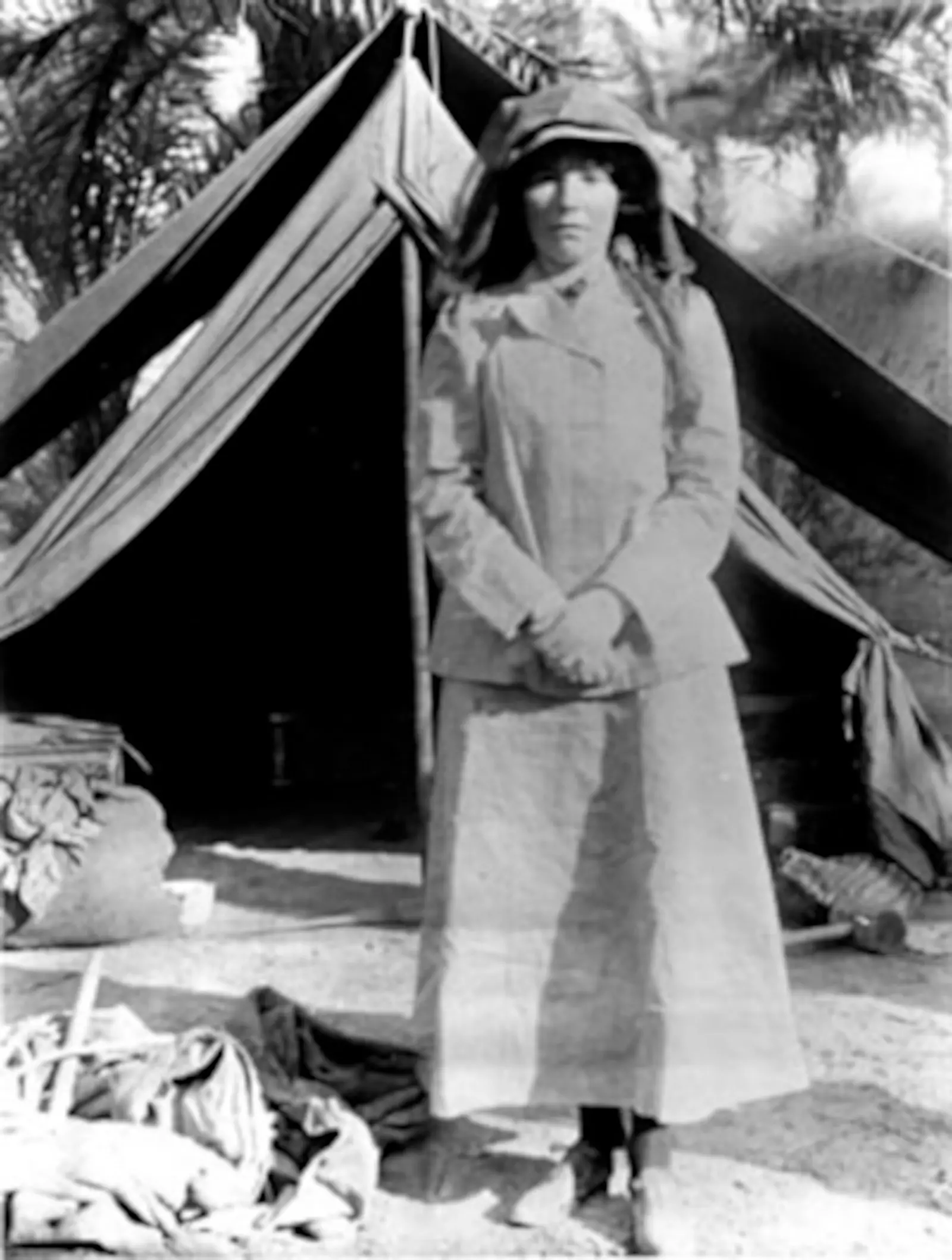
Gertrude Bell, in Babylon, Iraq
After completing the information work, she was sent to Basra as a representative of the Arab Office. Gertrude was the only woman in an official position in the Middle East during the war.
After the armistice she moved to Baghdad, from where she i she promoted the creation of the state of Iraq under a Hashemite monarch (the dynasty that holds power in Jordan), against the reticence of her government.
It is ironic that a woman, deprived of the right to vote in her country of origin until 1918, defined the borders of another. She tried to strike a balance between different ethnic and religious groups.
Her work, undertaken from a Eurocentric and imperialist idealism, she brought together under a flag and a territory, peoples whose coexistence would prove unfeasible.
Her enthusiasm for Mesopotamian culture led her to found the Baghdad Archaeological Museum , which had her own collection as its core. After the coronation of Faysal I she remained in the city, at the head of the museum, with the position of Director of Antiquities.
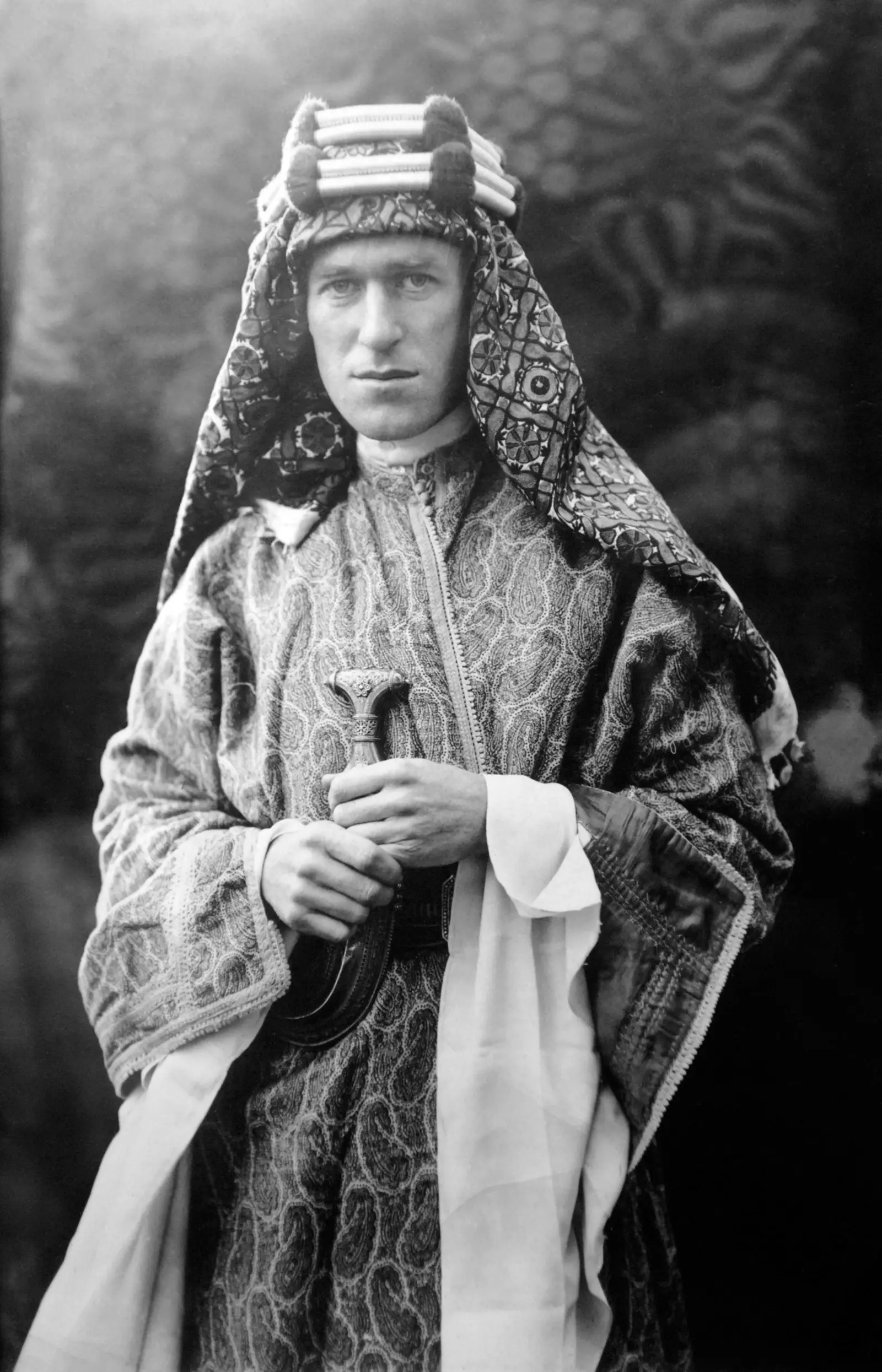
Lawrence of Arabia
Bell lived for eight years in the void of an unsettled peace. He made a trip to England and, on his return to Baghdad, he died of an overdose of sleeping pills.
Her figure was overshadowed by that of T.E. Lawrence that despite their close relationship, in the David Lean film: Lawrence of Arabia, Bell does not appear.
The rebellious knight embodied by Peter O'Toole fit the figure of the hero. Gertrude was tied to the troubled fate of Iraq, the country she shaped.
Her political involvement and the uncertain conditions of her death, coupled with her endemic mistrust of a woman of militant independence, they cast shadows that blotted out her memory. An irregular biopic starring Nicole Kidman and signed by Werner Herzog has marked a lukewarm recovery.
In Iraq she is still remembered as Al-Khatun, the noble woman.

'Queen of the Desert', starring Nicole Kidman, James Franco, Damian Lewis and Robert Pattinson
